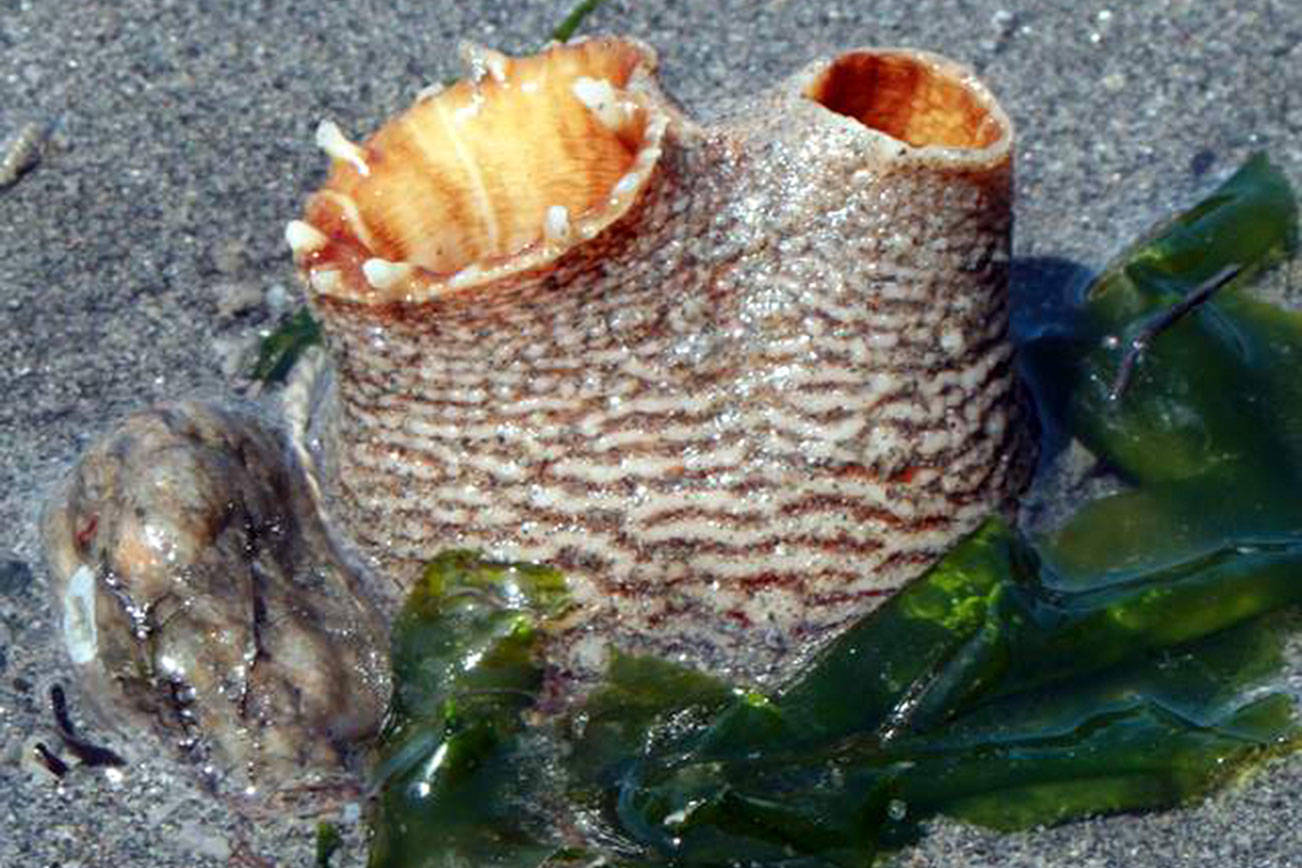Citizen Science Project Investigates Whidbey Clam Populations

Table of Contents
The Importance of Monitoring Whidbey Clam Populations
Clams play a significant ecological role in the intertidal zones of Whidbey Island. As filter feeders, they improve water quality by removing sediment and pollutants. Their burrows create habitat for other invertebrates and small fish, contributing to a rich and diverse ecosystem. Furthermore, clams serve as a crucial food source for many shorebirds, fish, and other marine animals. The health of Whidbey clam populations is therefore a strong indicator of the overall health of the island's marine environment.
However, several threats endanger Whidbey clam populations. Pollution from agricultural runoff, stormwater, and other sources introduces harmful chemicals and sediments that negatively impact clam health and survival. Climate change is also a significant factor, altering water temperature and salinity, which can affect clam reproduction and growth. Over-harvesting, both legal and illegal, can further deplete populations, leading to ecological imbalances.
Accurate data on Whidbey clam populations is essential for developing and implementing effective conservation strategies. Without this information, it is difficult to assess the severity of threats, track population trends, and measure the success of conservation efforts. This data-driven approach is crucial for protecting these valuable shellfish.
- Clams are keystone species in the intertidal zone, meaning their presence significantly influences the entire ecosystem.
- Pollution from runoff impacts clam health and survival, leading to decreased reproduction and higher mortality rates.
- Climate change affects water temperature and salinity, impacting clam reproduction and potentially leading to range shifts.
- Over-harvesting can deplete populations, disrupting the balance of the intertidal ecosystem and threatening the survival of dependent species.
The Citizen Science Project: Methodology and Data Collection
This citizen science project utilizes the power of community engagement to monitor Whidbey clam populations. The project recruits and trains volunteers from the local community to participate in data collection. Volunteers receive comprehensive training on clam identification, safe data recording techniques, and standardized sampling protocols. This ensures data consistency and accuracy across different sampling sites.
The data collection process involves surveying pre-determined locations within the intertidal zone. Volunteers identify clam species, count individuals within designated quadrats (a defined sampling area), and record relevant environmental data such as water temperature and salinity. To streamline the process and ensure data accuracy, the project employs a user-friendly mobile app. This app allows volunteers to record their observations directly in the field, geo-tag locations, and submit data securely to a central online database.
- Volunteers receive training in clam identification and data recording techniques.
- Standardized sampling protocols ensure data consistency across different locations and time points.
- A user-friendly mobile app facilitates data collection in the field, minimizing errors and maximizing efficiency.
- Data is securely stored and analyzed using cloud-based platforms, ensuring accessibility for researchers and managers.
Preliminary Findings and Impact of the Citizen Science Project
Preliminary findings from the Whidbey clam population study, based on data collected by citizen scientists, show some concerning trends. Several clam species exhibit declining populations in certain areas, highlighting the need for targeted conservation efforts. The distribution patterns of different clam species also reveal potential habitat preferences and vulnerabilities.
The impact of this citizen science project extends far beyond the scientific data collected. It has fostered significant community engagement and raised awareness about the importance of Whidbey Island's intertidal ecosystems. Hundreds of volunteers have actively participated, gaining valuable knowledge about marine ecosystems and developing a sense of stewardship for their local environment. This increased awareness has sparked community-based initiatives to protect clam habitats through beach cleanups and advocacy for responsible land management practices.
- Preliminary data shows a decline in certain Whidbey clam species, indicating the urgent need for conservation measures.
- The project has engaged hundreds of volunteers in environmental stewardship, fostering a sense of community and responsibility.
- Citizen science data is being used to inform local and state environmental agencies, shaping conservation policies.
- Increased awareness has led to community-based initiatives to protect clam habitats, contributing to long-term conservation success.
Future Directions and Collaboration
This citizen science initiative plans long-term monitoring of Whidbey clam populations to track population trends effectively and assess the success of conservation efforts. Continuous data collection will provide valuable insights into the long-term impacts of environmental changes and human activities on these important shellfish.
The project is actively seeking collaborations with researchers from universities and government agencies, leveraging their expertise to enhance data analysis and interpretation. Partnerships with local organizations and environmental groups are also being developed to expand the project's reach and impact. Future research will focus on investigating the effects of specific environmental factors, such as water quality and climate change, on Whidbey clam populations.
- Long-term monitoring is essential to track population trends and evaluate the effectiveness of conservation actions.
- Partnerships are being developed to expand the project's reach and enhance data analysis capabilities.
- Future research will explore the effects of specific environmental factors on Whidbey clam populations.
Conclusion
The citizen science project investigating Whidbey clam populations is demonstrating the power of community involvement in environmental research and conservation. The data collected is crucial for understanding the challenges facing these vital shellfish and informing effective management strategies. The project's success highlights the value of citizen science in bridging the gap between scientific research and community action, leading to increased environmental awareness and more effective conservation outcomes.
Want to contribute to the protection of Whidbey clam populations? Join the citizen science project and become a part of this vital conservation effort! Learn more about volunteering and how you can make a difference in preserving the Whidbey Island ecosystem. Help us monitor Whidbey clam populations and ensure a healthy future for these important shellfish.

Featured Posts
-
 Is Live Now Pay Later Right For You A Comprehensive Review
May 30, 2025
Is Live Now Pay Later Right For You A Comprehensive Review
May 30, 2025 -
 Jacob Alons New Track August Moon Released
May 30, 2025
Jacob Alons New Track August Moon Released
May 30, 2025 -
 Uerduen Gazze Deki Kanserli Cocuklarin Tedavisi Icin Oenemli Bir Rol Oynuyor
May 30, 2025
Uerduen Gazze Deki Kanserli Cocuklarin Tedavisi Icin Oenemli Bir Rol Oynuyor
May 30, 2025 -
 Housing Market In Freefall Sales Reach Crisis Point
May 30, 2025
Housing Market In Freefall Sales Reach Crisis Point
May 30, 2025 -
 Dhkra Alastqlal Ihyae Wtjdyd Alehd
May 30, 2025
Dhkra Alastqlal Ihyae Wtjdyd Alehd
May 30, 2025
